#java in nepal
Explore tagged Tumblr posts
Text
Nepal van Java, Indonesia: Nepal van Java is a small village famous for its colorful houses on the slopes of Mount Sumbing. This uniqueness is in the houses of residents who inhabit the mountainside. Lined up neatly with unique shapes and distinctive colors. Furthermore, the background of Mount Sumbing makes this place even more similar to Nepal. The difference is that in Nepal there is a snowy Mount Everest in the background. Wikipedia
#Nepal van Java#Hamlet#Butuh#Temanggung#Kaliangkrik District#Magelang Regency#Central Java#Indonesia#Asia#Asian Continent
308 notes
·
View notes
Text
📍Dusun Butuh (Nepal Van Java), Mount Sumbing, Kaliangkrik, Magelang, Island Java, Indonesia 🇮🇩
#video#view#paradise#nature#paraiso#natureza#explore#travel#trip#indonesia#island#nepal van java#volcano#vulcão#village#travel destinations#landscape#vacation#ilha#monte#colorful homes#mountains#goals#island java
65 notes
·
View notes
Photo

by thefreedomcomplex
2K notes
·
View notes
Text
youtube
Mahayogi Rudraksha happy client. Satisfied with the results from the recommended rudraksha. He keeps on buying rudraksha from me.
https://youtube.com/@mahayogirudraskha5053?si=dvPKdJWVOZXixvxa
Instagram -
https://instagram.com/mahayogirudraksha?igshid=NGVhN2U2NjQ0Yg==
Facebook -
https://www.facebook.com/mahendra.kadam.376
Google -
https://g.co/kgs/fHZ6kM
#gemstone#rudralsha#religious studies#religious#yantra#rudraksha#parad#shivling#lordshiva#shaligram#Nepal rudraksha#java rudraksha#certified rudraksha#Youtube
0 notes
Text
Mau Wisata ke Magelang? Nih Rekomendasinya!
Halo Sobat Liburan, ada gak yang di sini pernah wisata ke Magelang? Kalau kamu pernah ke Candi Borobudur, dapat dipastikan kamu pernah ke Magelang nih. Masih banyak orang yang mengira kalau lokasi Candi Borobudur itu di Yogyakarta. Nah, kalau gitu tempat wisata apa aja sih yang bisa kamu kunjungi di Magelang selain Candi Borobudur? Yuk disimak! 1. Gunung Merapi Siapa yang gak tahu dengan gunung…

View On WordPress
#candi borobudur#candi mendut#candi umbul#gunung merapi#jawa#liburan#liburanterus#Magelang#Nepal Van Java#Silancur Highland#Travel#wisata#yogyakarta
0 notes
Text
#java course in nepal#best it training institute in nepal#it training centre in nepal#it training in nepal#best programming courses in nepal#graphic design course in kathmandu
0 notes
Text
Susunan Rumah Warga Butuh Jadi Daya Tarik Wisata Nepal Van Java
BNews–MAGELANG— Desa wisata di Kabupaten Magelang yang satu ini terletak di lereng Gunung Sumbing, tepatnya di Dusun Butuh, Desa Temanggung, Kecamatan Kaliangkrik. Dusun Butuh atau dijuluki dengan Nepal van Java ini berada di dusun tertinggi di Kabupaten Magelang dengan ketinggian 1750 mdpl. Dusun Butuh merupakan sebuah perkampungan tertinggi di Kabupaten Magelang dengan tata ruang alami atau…
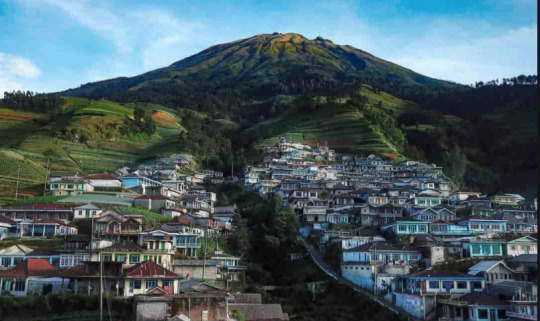
View On WordPress
#Berita Jateng#Berita Jogjakarta#Berita Magelang#Berita Nasional#Berita Viral#Borobudur News#Butuh#Magelang#Nepal Van Java#Susunan Rumah Warga Butuh Jadi Daya Tarik Wisata Nepal Van Java#Wisata Magelang
1 note
·
View note
Text
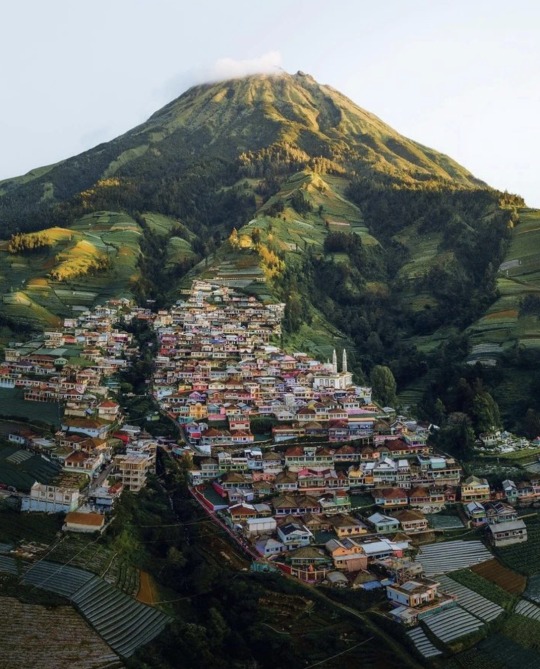
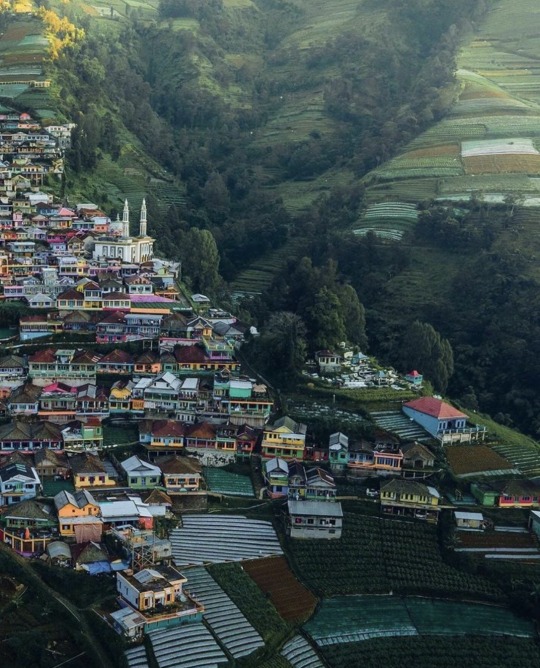
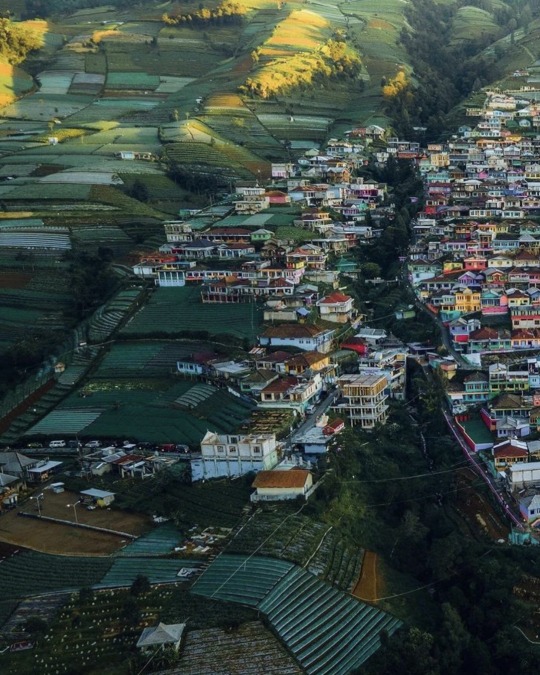
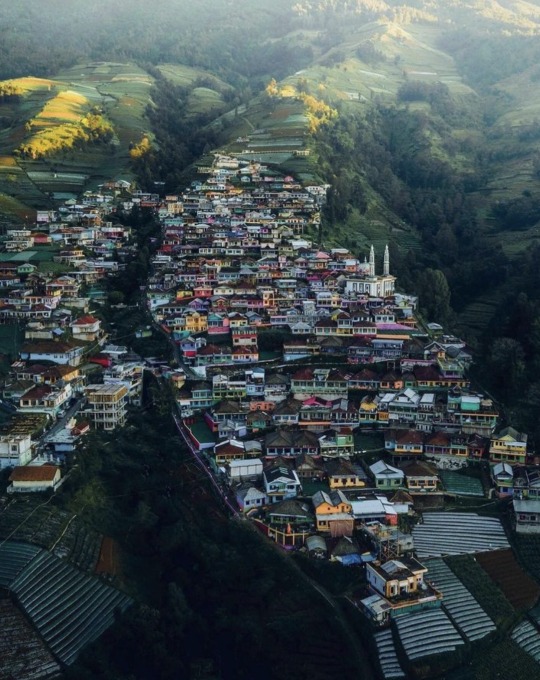
📍Nepal Van
Java Dusun
Butuh, Kaliangkrik Kab,
Magelang. @ogik_jatmiko #travel #travelingare #nepalvanjava #wunderfulindonesia #livefolkindonesia
15 notes
·
View notes
Text

Avalokiteśvara (a.k.a. "Avalokitasvara" or “Avalokiteshvara”) is a bodhisattva who embodies the compassion of all Buddhas. He has 108 avatars, one notable avatar being Padmapāṇi, the one who holds the lotus (padma). He is variably depicted, described, and portrayed in different cultures as either male or female. In Tibet, he is known as Chenrézik. In East Asia, he is commonly known as Guānyīn.
Scholars have not reached a consensus on the origin of the reverence for Avalokiteśvara. Some have suggested that Avalokiteśvara, along with many other supernatural beings in Buddhism, was a borrowing or absorption by Mahayana Buddhism of one or more deities from Hinduism, in particular Shiva or Vishnu. This seems to be based on the name “Avalokiteśvara” (i.e., a variant of “Ishvara”). In Hindu tradition, he has been depicted as an emanation of Shiva and is strongly venerated by the Hindus of Nepal, Java, and Bali.
13 notes
·
View notes
Text
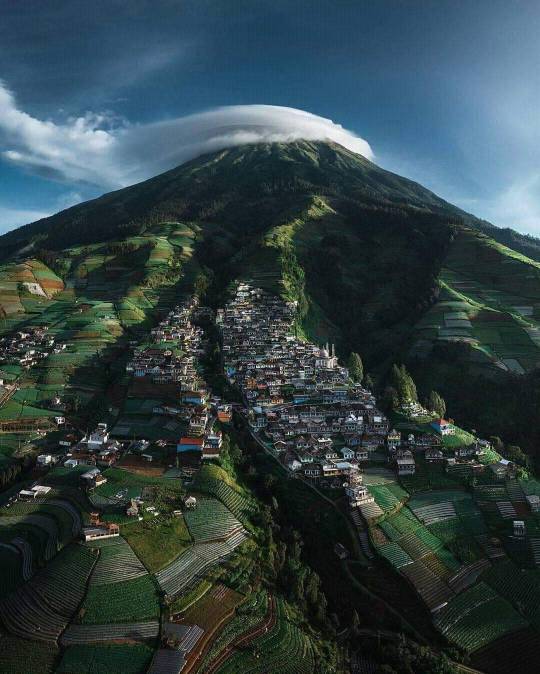
Indonesia 🇮🇩 Nepal Van Java Village on the Slope of Mt Sumbing.
#landscape & scenery#nature#landscapes & sceneries#exotic places#faraway places#exotic locations#exotic destinations
6 notes
·
View notes
Text
Mythic Creatures by Region & Culture
Part 8: Asia and South Pacific
The Mesopotamian entries are often culture-specific and I'll need to sort them into their respective regions in future.
allegedly Asian
Barometz; Salamander
Smaller Entries:
Akathaso, Burma, tree spirit; Barmanou, Pakistan; Benzaiten; Churel; Creatures of Azerbaijan; Dab Hmong; Dakhanavar Armenian; Ḍākinī; Death; Landlord Deities; Mountain God; Peacock Princess; Sin-you; Sky Fox; Teng; Tenghuang; Xeglun Tungusic Ainu
Akkorokamui; Amemasu; Hoyau; Kenas-unarpe; Korpokkur; Mintuci Cambodia; Koan Kroach nightmare fuel; Kting voar also Vietnam; Mrenh kongveal
China
Ao; Ao Guang; Azure Lung; Bai Lung Ma; Bai Suzhen; Bai Ze; Bao Si; Bashe; Bi Fang bird; Bixi; Black Tortoise; Boto_and_Dolphin_Spirits; Cangjie; Chang; Chi; Chinas; Chinese guardian lions; Chinese Monkey Creatures; Chinese serpent killed by Li Ji; Chinese Souls; Chiwen; Chiyou; City God; Daji; Dēnglung; Dilung; Diting; Dogs in Chinese mythology; Dong Yong and the Seventh Fairy; Dǒumǔ; Dragon turtle; Fangfeng; Fangxiangshi; Feilian; Feilung; Feng; Fènghuáng; Fengli; Flying Horse of Gansu; Four Perils; Fox Spirit; Fuxi; Fuzanglung; Fuzhu; Gangcheori; Ghosts in Chinese culture; Gonggong; Guang yi ji; Hairen; He-He Er Xian; Hong; Hòutǔ; Hun and po; Hundun; Huodou; Húxiān; Jiangshi; Jiaolung; Jin Chan; Jinmenju also Japanese; Jiutian Xuannü; Jiutou Zhiji Jing; Jiuweihu; Jué yuán (Japanese version Jueyuan); King Father of the East; Kitchen God; Kuafu; Kui; Lake Tianchi Monster; Luan; Luduan; Lung; Lungma; Lungmu; Magpie Bridge; Magu; Menshen; Mo; Mogwai; Momu; Moon Rabbit; Nian; Nine-headed bird; Nüba; Nüwa; Pangu; Panhu; Panlung; Peng; Penghou; Pig Dragon; Pipa Jing; Pixiu; Pulao; Qianlima also Korean; Qilin; Qingji; Qingniao; Qiulung; Queen Mother of the West; Sanshi; Sha Wujing; Shangyang; Shen; Shen_clam_monster; Shenlung; Shi Dog; Shuimu; Spirit Turtle; Stone Sentinel Maze; Swan Maiden Yao; Taotie; The Governor of Nanke; The Painted Skin; The Nine Peahens and the Golden Apples; Three-legged crow also Japanese and Korean; Tianguo; Tianlung; Tianma; Tu'er Shen; Tubo; Tudigong; Unicorn; Watersheep (see Vegetable Lamb of Tartary); Vermillion Bird; Wangliang; White Tiger; World Turtle; Wutong Shen; Wuzhiqi; Xian; Xiangliu; Xiao; Xiezhi; Xingtian; Xirang; Yao Grass; Yāoguài; Yellow Lung; Yeren; Yeti also Tibetan and Nepali; Yinglung; Zhenniao; Zhu Bajie; Zhulung
Hittite
Annunaki; Illuyanka the equivalent of Hurrian Ḫedammu; Hittite Goddesses of Fate
Hurrian
Annunaki; Ḫedammu the equivalent of Hittite Illuyanka; Tilla; Ullikummi; Upelluri
Iran (Persia)
Akvan Div; Al but also in Mongolia, Russia, Afghanistan, Caucasus; Almas also Turkic and Mongolia; Anguiped also Greek and Roman.; Arzhang Div; Azhdaha; Chamrosh; Div; Div-e Sepid; Fulad-zereh; Gochihr; Griffon; Huma bird; Karkadann allegedly lived in India and Persia; Manticore allegedly lived in India; Peri also Turkic, Islamic (and Indian?); Rakhsh; Shabrang; Shahbaz; Shahmaran Indo-Iranian and Turkic; Shahrokh; Sheshe; Simurgh; Sphinx in a wide sense; Takam; Tyger allegedly lived in Persia; Unicorn; Vegetable Lamb of Tartary the Chinese watersheep allegedly lived in Persia; Werehyena; Winged Unicorn; Zahhāk
Java
Antaboga, pre-Islamic, Hindu; Kakawin; Keong Emas; Wewe Gombel Korea; Bulgae; Chilseok; Dokkaebi; Dokkaebi bangmangi; Egg Ghost; Gasin (house god); Gunungsin; Gwisin; Haesindang Park; Inmyeonjo; Jihaguk daejeok toechi seolhwa; Korean dragon; Korean Virgin Ghost; Munshin; Namu doryeong; Pulgasari; Qianlima also Chinese; Ryong; Samsin Halmeoni; Seonangshin; Sosamsin; The Heavenly Maiden and the Woodcutter; Three-legged crow also Japanese and Chinese; Ungnyeo; Ureongi gaksi;
Mongolia
Al but also in Persia, Russia, Afghanistan, Caucasus; Almas also Iran and Turkic; Aq Bars, winged snow leopard, heraldry from 800s onwards, also Slavic; Mongolian Death Worm Myanmar; Manussiha; Nat; Nawarupa; Pyinsarupa; Sphinx in a wide sense; Thayé; Yokkaso
Nepal
Gurumāpā; Khyāh; Kichkandi; Lākhey; Murkatta; Yeti also Chinese and Tibetan
Philippines
Alan of the Tinguian people; Amalanhig of the Visayan; type of Aswang; Amomongo of the Visayan; Angalo of the Ilocano; Anggitay Philippine centauride, female Tikbalang; Anito; Aswang; Bakunawa; Bal-Bal; Batibat of the Ilocano; Berbalang of Mindanao towns; Berberoka northern Luzon; Bernardo Carpio; Bungisngis Meluz, Orion, Bataan and Batangas; Busaw; Buso Bagobo; Dalaketnon Cebuano; Ekek; Engkanto; Ibong Adarna; Kapre; Kataw; Kumakatok; Manananggal; Manaul; Mandurugo; Minokawa; Nuno sa punso; Philippine Mytic Creatures; Pugot; Sarangay; Sarimanok; Sigbin; Sirena; Siyokoy; Tigmamanukan; Tikbalang; Tiyanak; Wakwak
allegedly Scythian (rider culture, no written records, all inhabitants and creatures based on Greek reports)
Amazons, Amazons (List); Arimaspi north Scythia; Scythian genealogical myth; Scythian religion; Scythians; Tarand; Vegetable Lamb of Tartary
Taiwan
Hanitu; Mo-sin-a; Ta'ai; Tek-ko-kui
Thai
Apsonsi; Cha kla; Hatsadiling; Hemaraj; Kong Koi; Krahang; Krasue; Kuman Thong; Mae Nak Phra Khanong; Mae yanang; Nang Mai; Nang Ta-khian; Nang Tani; Nariphon; Ninlaret; Phi phong; Phi Tai Hong; Phisuea Samut; Pop (ghost); Sphinx in a wide sense; Sudsakorn; Suvannamaccha
Tibet
Gyalpo spirits; Ro-langs; Simhamukha; Snow Lion; Tibetan myth; Wind Horse; Yeti also Chinese and Nepali
Vietnam
Hồ ly tinh; Kting voar also Cambodia; Lạc bird; Nghê; Rồng ; Vietnamese Dragons
Turkic
Äbädä, also found in Siberian mythology; Abasy, also found in Siberian mythology; Aiy Yakut; Al in Mongolia, Russia, Afghanistan, Caucasus; Al Ana; Al Basty from Sumerian; Alara, also found in Siberian mythology; Almas also Iran and Mongolia; Archura; Asena; Ayaz Ata; Bai Baianai also Yakut; Basty Turkic alp or mare; Bichura Turkic household spirit; Chai nenesi; Chesma iyesi; Çor also Siberian; Ergene iyesi; Erkenek; Hortdan; Irshi; Itbarak; İye; Konrul; Korbolko; Kormos; Mhachkay includes Tatar lore; Mu shuvuu; Örek; Peri also Persian, Islamic (and Indian?); Qarakorshaq; Sazakan; Shahmaran Indo-Iranian and Turkic; Sheka; Shurali; Su iyesi; Susulu; Tepegöz; Tulpar; Turul also Hungarian; Upiór also Slavic; Uylak; Werewolf; Yekyua; Yelbeghen; Yer iyesi; Yer-sub; Yuxa
Turkish
Gelin; İn Cin; Uzuh
Siberia
Äbädä, also found in Turkic mythology; Abasy, also found in Turkic mythology; Aiy Yakut; Alara, also found in Turkic mythology; Bai Baianai, also found in Turkic mythology; Çor also Turkic; İye also Turkic\; Menk; Oksoko Yakut; Ongon; Pitsen; Sihirtia; The Great Snake; Yekyua; Yelbeghen
South Pacific Islands
Abaia: Fiji, Solomon and Vanuatu Islands. ; Abere, unspecified "Melanesia"; Adaro, Solomon Islands, merfolk; Aitu, from Maori to various east and west Polynesian cultures; Amai-te-rangi Cook Islands; Apukohai, Hawaii; Aremata-Popoa and Aremata-Rorua; Atonga Samoa; Atua; Auriaria Kiribati; Avatea Cook Islands; Baloma; Barong; Flaming Teeth Fiji; Gazeka Papua New Guinea; Hatuibwari Solomon Islands; Ila (Samoan myth); Kae and Longopoa; Kai-n-Tiku-Aba; Kalamainu'u Hawaii; Kawas; Kihawahine; Kupua Hawaii; Losi Samoa; Menehune Hawaii; Miru Cook Islands; Moʻo Hawaii; Moso's Footprint Samoa; Nawao Hawaii; Nei Tituaabine; Nganaoa; Nightmarchers Hawaii; Pahuanui Tahiti and Society Islands; Pua Tu Tahi; Rogo-Tumu-Here; Savali; Sina and the Eel; Talamaur Vanuatu; Tamangori; Tangaroa; Taotao Mo'na Mariana Islands; Tapairu Cook Islands; Tiʻitiʻi; Tikokura; Tinirau similar to Māori Tinirau and Kae;
Māori
Aitu also common in all parts of East and West Polynesia, sometimes with slightly different meanings; Atua; Hāhau-whenua; Hākuturi; Hawakai; Hemā; Hine-nui-te-pō; Kiwa; Kumi Lizard; Kurangaituku; Maero; Manaia; Maori ghosts; Matuku-tangotango; Moehau; Nuku-mai-tore; Pania of the Reef; Paoro; Patupaiarehe; Ponaturi; Pouākai; Taniwha; Taoroinai; Te Wheke-a-Muturangi; Tinirau and Kae; Tipua; Waitoreke; Whakatau; Whiro
Indian Ocean Islands
Folklore of the Maldives; Rannamaari
Japan (separate categories for Ainu and Okinawa)
Abumi-guchi; Abura-akago; Abura-sumashi; Aka Manto; Akabeko; Akaname; Akashita; Aketeko; Akubōzu; Akugyo; Akuma; Akurojin-no-hi; Ama no Fuchigoma; Amabie; Amanojaku; Amanozako; Amazake-babaa; Amefurikozō; Ameonna; Amikiri; Amorōnagu; Aoandon; Aobōzu; Aonyōbō; Aosaginohi; Arikura-no-baba; Ashi-magari; Ashinaga-tenaga; Ayakashi; Azukiarai; Azukibabaa; Azukihakari;
Bake-danuki; Bake-kujira; Bakemono; Bakeneko; Bakezōri; Baku; Banchō; Basan; Betobeto-san; Binbōgami; Biwa-bokuboku; Boroboroton; Bukit Timah Monkey Man WWII Japanese soldiers in Bukit Timah (Singapore) saw this; Byōbunozoki;
Chimimōryō; Chōchin'obake; Chōchinbi;
Daidarabotchi; Daikokuten; Danzaburou-danuki; Datsue-ba; Dodomeki; Dōsojin;
Ehon Hyaku Monogatari; Emishi; Enenra;
Fūjin; Funayūrei; Furaribi; Furutsubaki-no-rei; Futakuchi-onna;
Gagoze; Gashadokuro; Gazu Hyakki Yagyō; Gohō dōji; Goryō;
Hagoromo (swan maiden play); Hakuzōsu; Hanako-san; Hannya; Hare of Inaba; Harionagu; Hashihime; Heikegani; Hell Courtesan; Hibagon; Hiderigami; Himiko; Hito-gitsune; Hitodama; Hitotsume-kozō; Hitotsume-nyūdō; Hone-onna; Hotoke; Hyakki Tsurezure Bukuro; Hyakki Yagyō_Wild Hunt; Hyōsube; Hyottoko;
Ibaraki-dōji; Ikiryō; Ikuchi; Inari Ōkami; Inugami; Inugami Gyōbu; Ishinagenjo; Isonade; Issie; Issun-boushi; Itsumade; Ittan-momen;
Janjanbi; Japanese Serpent; Jikininki; Jinmenju also Chinese; Jinmenken; Jorōgumo; Jubokko; Jueyuan (Chinese version Jué yuán);
Kaibyō; Kamaitachi; Kami; Kamikiri; Kappa; Karura; Kasa-obake; Kasha; Kawauso; Kechibi; Keneō (oni); Kidōmaru; Kijo (folklore); Kinoko; Kitsune; Kitsune no yomeiri; Kitsunebi; Kiyohime; Kodama; Kōga Saburō; Komono; Konaki-jiji; Konjaku Gazu Zoku Hyakki; Konjaku Hyakki Shūi; Konpira Gongen; Koromodako; Koto-furunushi; Kotobuki; Kōya Hijiri; Kubikajiri; Kuchisake-onna; Kudagitsune; Kudan; Kumiho; Kuraokami (ryu); Kuro-shima (Ehime); Kurozuka; Kuzenbo; Kuzunoha; Kuzuryū;
Makuragaeshi; Maneki-neko; Matarajin; Mazoku; Megijima; Menreiki; Miage-nyūdō; Mikaribaba; Mikoshi-nyūdō; Misaki; Mishaguji; Mishihase; Mizuchi; Mokumokuren; Momiji; Momotarō; Mononoke; Mōryō; Mujina; Myōbu;
Namahage; Namazu; Nekomata; Ningen; Ningyo; Niō; Noderabō; Noppera-bō; Nue; Nuppeppō; Nurarihyon; Nure-onna; Nuribotoke; Nurikabe; Nyūdō-bōzu;
Oboroguruma; Ochimusha; Ōkubi; Okuri-inu; Ōmukade; Oni; Oni Gozen; Onibi; Onihitokuchi; Onikuma; Onmyōji; Onryō; Ōnyūdō; Ootakemaru; Orochi; Osakabehime; Osaki; Otoroshi; Oukami; Ouni;
Raijin; Raijū; Rashōmon no oni; Reikon; Rōjinbi; Rokkaku-dō; Rokurokubi; Ryū; Ryūgū-jō; Ryūjin;
Sakabashira; Samebito; Sankai; Sarutahiko Ōkami; Satori; Sazae-oni; See-Hear-Speak No Evil; Sessho-seki; Setsubun; Shachihoko; Shapeshifter; Shibaemon-tanuki; Shichinin misaki; Shidaidaka; Shikigami; Shikome; Shinigami; Shiranui; Shirime; Shiryō; Shōjō; Shōkera; Shuihu; Shuten-dōji; Smallpox demon; Sōjōbō; Sorei; Sunekosuri; Suzuka Gozen;
Takaonna; Takarabune; Tamamo-no-Mae; Teke Teke; Tengu; Tenka; Tennin; Tenome; Tentōki and Ryūtōki; Tesso; Three-legged crow also Chinese and Korean; Tōfu-kozō; Toyotama-hime; Tsuchigumo; Tsuchinoko; Tsukumogami; Tsukuyomi-no-Mikoto; Tsurara-onna; Tsuru no Ongaeshi; Tsurube-otoshi; Tsurubebi;
Ubagabi; Ubume; Umi zatō; Umibōzu; Ungaikyō; Ushi no toki mairi; Ushi-oni; Uwan;
Waira; Wani; Wanyūdō; Watatsumi;
Yako; Yakusanoikazuchi; Yama-uba; Yamabiko; Yamabito; Yamainu; Yamajijii; Yamata no Orochi; Yamawaro; Yanari; Yashima no Hage-tanuki; Yato-no-kami; Yobuko; Yōkai; Yōsei; Yosuzume; Yotsuya Kaidan; Youkai; Yuki-Onna; Yume no seirei; Yūrei;
Zashiki-warashi; Zennyo Ryūō; Zuijin; Zashiki-warashi
Okinawa
Kijimuna
allegedly Arabic Cinnamologus
Morocco Aisha Qandicha
Mesopotamia Abyzou; Annunaki; Anzû; Ardat-lilî; Beings of Irkalla or Kur; Bull of Heaven; Dagon; Edimmu; Ghosts in Mesopotamian culture; Hanbi; Humbaba; Igigi; Kilili; Kulullû; Kusarikku; Labbu; Lahamu; Lamashtu; Lilin also in Jewish folklore; Lotan; Lugal-irra; Lulal; Mukīl rēš lemutti; Mušḫuššu; Mušmaḫḫū; Namtar; Ninimma; Ninurta; Pazuzu; Rabisu; Scorpion men; Sea goat; Serpopard; Seven-headed serpent; Six-headed Wild Ram; The Four Winds; Tiamat; Udug; Ugallu; Umū dabrūtu; Uridimmu; Urmahlullu; Wild Man, Wild Woman ; Wild Men, Wild Women Enkidu; Zaqar
allegedly Mesopotamian Sirin
Akkadian Abkallu, also Sumerian; Akhkhazu, later Babylonian; Alû also Sumerian, an utukku with no mouth, ears, lips; Asag also Sumerian; Bašmu (possibly other parts of Mesopotamia, but badly attested); Lilu; Ušumgallu
Assyrian Adrammelech killed an Assyrian king; Alal references Babylonians
allegedly Assyrian Aralez in Armenian folklore, Semiramis controls an Aralez
Babylonian Akhkhazu, earlier Akkadian; Alal from Chaldean-Assyrian sources; Kulilu
Sumerian Abkallu, also Akkadian; Al Basty, later also in Turkic traditions; Alû also Akkadian, an utukku with no mouth, ears, lips; Asag also
Akkadian Kuli-ana; Palm Tree King#
Mesopotamian (Other) Atargatis Canaanite goddess; Tannin Canaanite; Yam Canaanite
Buddhism
Acala, Vajrayana Buddhism & East Asian Buddhism; Apalala a naga king; Apsara; Asura; Āṭavaka; Cakrasaṃvara Tantra; Ḍākinī; Diting; Girimekhala; Hayagriva; Heruka; Hevajra; Hungry Ghost; Kalaviṅka; Kangiten Buddhism in Japan; Kṣitigarbha; Kuṇḍali; Mahakala; Mahamayuri; Mahoraga; Manjushrikirti; Mara; Mucalinda; Nariphon; Niō; Preta; Rakta Yamari; The sixteen dreams of King Pasenadi; Trailokyavijaya; Tulpa; Vajrakilaya; Vajrayakṣa; Vemacitrin; Wisdom King; Wrathful deities
Jainism Ambika; Dharanendra; Gomukha; Jwalamalini; Mahoraga; Nabhi; Rishabhanatha
India
Aghasura asura in shape of 8 mile serpent (500 CE to 1000 CE, but most likely between 800 and 1000 CE); Agni_deity; Airavata; Akshayavata tree (estimated between the 4th and 15th century CE. Some parts of the text may be from the 750 to 1000 CE period.); Anasuya; Andhaka asura with 1000 heads 2000 eyes 1000 arms; Angiris; Apsara; Arjuna; Asi; Asura; Bakasura a rakshasa (despite "asura" in the name); Barbarika; Basnak Dau; Bhagadatta; Bhargava; Bhoota; Bhramari; Bhringi; Brahmahatya; Brahmarākṣasa���; Buru; Chakora; Chana and Munda; Chaturbhuja; Chedipe; Chidambara Rahasiyam; Chinas; Chir Batti ghost light; Chitrāngada; Chyavana; Creatures from Vetala Tales; Daayan; Daitya; Daksha\; Daksha yajna; Danava; Daruka; Dawon; Devas; Devatas; Durgamasura; Durukti; Dvarapala; Dvipa; Gādhi; Gaja; Gajasimha; Gaṇa; Gandaberunda; Gandharva; Garuda; Ghosayatra Parva; Grahana; Guhyaka; Gusainji Maharaj; Halahala; Hamsa; Haryashvas and Shabalashvas; Hidimba; Hiranyakashipu; Hiranyaksha; Ichchadhari naag; Ila; Ilavida; Ilvala and Vatapi (asura); Iravati; Jahnu; Jarita; Jvarasura; Kabhanda; Kālakeya ; Kālakeyas; Kalanemi (asura); Kalanemi (Ramayana); Kaliya; Kamadhenu; Kamakhya; Ketu; Keukegen; Kimpurushas; Kinnara; Kirmira; Kirtimukha; Koka and Vikoka; Kotavi; Kubera; Kumbhakarna; Kumbhāṇḍa; Kuntilanak ; Kurma; Kuttichathan; Lajjā Gaurī; Mada; Madhu-Kaitabha; Madhusudana; Mahabali; Maharajikas; Mahishasura; Mahoraga; Makara; Manasa_Snake_Goddess; Mānasaputra; Mande Barung; Maṇibhadra; Manohara; Mara_Goddess2 identical name to another death goddess Mara_Goddess (unrelated???); Maricha; Matsya; Mayasura; Monkey-man of New Delhi; Mṛtyu; Mukasura; Naga; Naga fireballs; Naga people; Nagaraja; Naimiṣāraṇya; Nandi; Narakasura; Narantaka-Devantaka; Narasimha Half human / Half Lion --> how Vishnu fulfills a prophecy like Eowyn or MacBeth; Navagunjara; Nivatakavacha; Pahlavas; Panchajanya; Panchamukha; Pichal Peri; Pippalada; Pishachas; Pitr; Poubi Lai; Prahlada; Pratyangira; Puloman; Putana; Rāgarāja; Rākshasas; Raktabīja; Ravana; Rishyasringa; Rukmavati; Samagana; Sampati; Sarama; Sarpa Kavu; Shahmaran Indo-Iranian and Turkic; Shambara; Shankha; Shatarupa; Shesha; Shikhandi; Shukra; Sphinx in a wide sense; Srbinda; Subahu; Sunda and Upasunda; Suparṇākhyāna; Ten Giant Warriors; Tree of Jiva and Atman; Tripurasura; Trishira; Tumburu; Ucchusma; Uchchaihshravas; Ulupi; Upamanyu; Vadavagni; Vahana (Mount of a Deva); Vajranga; Vanara; Varaha; Varahi; Vasuki_Naga_King; Vel; Vetala; Vidyādhara ; Vidyādharas; Viprachitti; Viradha; Vishala; Vritra; Vritra (dragon); Vyaghrapada; World Elephant; World Turtle; Yaksha; Yakshini; Yali; Yama; Yamaduta; Yamantaka
allegedly Indian Abarimon; Acheri; Aeternae; Astomi Pliny the Elder; Bragmanni; Calingae Pliny the Elder; Crocotta; Gold-digging ant; Griffon; Indus worm; Karkadann; Kratu; Mandi; Manticore; Monopod; Nuli; Odontotyrannus; Panther; Pard; Rompo; Salabhanjika; Sciritae; Sharabha; Tandava; Unicorn; Wild Man, Wild Woman ; Wild Men, Wild Women
Ayyavazhi Sect Kroni
Assam Baak
Bengali Bengali myths; Byangoma
Kannada Nale Ba
Kashmir Bramrachokh will-o-wisp; Rantas
Kerala Aana Marutha
Malayalam South India; Kallana
Manipur / Meitei Haosi Namoinu; Helloi; Hingchabi; Kanglā Shā; Kao; Keibu Keioiba; Khoirentak tiger; Khongjomnubi Nonggarol; Lai Khutshangbi; Meitei dragons; Meitei Mythic Creatures; Nongshāba; Pākhangbā; Sagol kāngjei; Samaton; Uchek Langmeitong; Umang Lai Sanamahism; Yenakha Paotapi Sri Lanka; Devil Bird; Maha Sona; Nittaewo; Reeri Yakseya; Sphinx in a wide sense; Tharaka; Yakseya and Yakka
Tamil Mamuni Mayan; Nadi astrology; Tamil myth
Indonesia Babi ngepet; Bukit Timah Monkey Man Singapore; Hainuwele; Hantu; Hantu Air; Hantu Bongkok; Hantu Raya; Hantu Tinggi; Jenglot; Kuntilanak also India; Lang Suir aka Langsuyar; Malay Creatures; Manseren Manggoendi; Nyi Roro Kidul; O Tokata; Orang bunian; Orang Mawas; Orang Minyak; Orang Pendek; Pelesit; Penanggalan similar to Philippines Manananggal; Pocong; Polong; Putri Tangguk; Rangalau Kiulu Phantom; Seri Gumum Dragon; Seri Pahang; Singa; Suanggi; Suangi; Sundel bolong; Tuyul; Warak ngendog
allegedly Malay Á Bao A Qu; Abath
Bali Bhoma; Gajamina; Leyak; Ogoh-ogoh
Flores Ebu gogo
Notify me about any mistakes or if any of these mythic figures, beings and creatures should not be used in art or fiction.
#mythic creatures#mythic creature list#legendary creatures#legendary creature#legendary being#legendary beings#creature list#legendary creature list#monster list#list of monsters
4 notes
·
View notes
Text
Nine Mukhi Rudraksha – Full Benefits and Details
nine Mukhi Rudraksha nine Mukhi Rudraksha has 9 natural vertical lines on its surface. This OrignalRudraksha is found mostly in Nepal and Java. This is also the favorite Rudramanaka of Mother Shakti and Navmukhi Rudraksha ithe representative of Goddess Durga endowed with Navshakti. The blessings of Kapil Muni and Bhairodev keep showering on this Rudraksha. It is especially worn as a protective shield, protecting the wearer from all types of evil properties, black magic and negativity. It provides strength and energy to the wearer. The ruling planet of 9 Mukhi Rudraksha is Ketu.
Unlike other Rudraksha, which display some or the other form of Lord Vishnu, but this bead represents the power of Maa Durga. This Rudraksha works as a home remedy to remove any kind of negative effects of malefic planets. According to Vedic astrology, planets influence the lives of humans. Since planets are always in motion, in the context of astrology, this transit occurs from one zodiac sign to another from time to time. The speed of some planets is slow while the speed of some planets is fast. All these planets keep changing their behavior negatively and positively with every transit. Based out of a zodiac sign, an astrologer makes predictions about the movements of those planets and informs you about good and bad times. It will also tell you about those planets which are negatively affecting your life. 9 Mukhi Rudraksha helps in reducing the negative effects of malefic planets.
Benefits of wearing 9 Mukhi Rudraksha Helps in employment, personality development and success in interviews.
It makes the wearer confident and powerful.
It removes the fear of time from the mind of the wearer and gives him the freedom to live freely.
It helps in removing the malefic effects of planets Ketu and Rahu.
It blesses women to attain physical and mental strength
It is recommended for career oriented women
It removes stomach related problems
It also helps in curing body aches, allergies affecting the skin
It boosts confidence in the wearer.
It helps in keeping a check on Kaal Sarp Dosh
It helps to establish connection with the universe by healing the Sahasrara Chakra
It keeps negative energy away from the wearer
It helps in warding off all kinds of enemies
It helps in destroying all the sins and worries of the person and connects him with Goddess Durga.
It associates the wearer with bravery, courage and endurance.
It helps in making the wearer positive and dynamic.
It helps improve the functioning of the brain and nervous system.
It helps in treating the problems of dizziness and vertigo.
It helps in removing phobias, anxieties and hallucinations in the person.
It helps in maintaining balance between worldly affairs and spiritual life.
It helps in treating epilepsy in the person.
It helps in removing depression and physical weakness of the Rudraksha wearer.
Method of wearing 9 Mukhi Rudraksha Saturday is considered to be the auspicious day to wear 9 Mukhi Rudraksha. First of all, keep Rudraksha in a copper vessel and sprinkle Ganga water on it. Then sit in the east direction of your temple and chant the mantra “Om Hreem Hoon Namah” and wear Rudraksh and chant it 108 times. If your astrologer suggests you to chant some additional mantras then you can do accordingly.
Note: Make sure that the Rudraksha is in direct contact with your body, so that its effect is fully visible to you.

#rudraksha#mahadev#bholenath#kedarnath#mahakal#shivay#omnamahshivaya#rudrakshabeads#shiv#harharmahadev#kedarnathdham#rudra#lordshiva#india#tungnath#rudraksh#pahadi#uttarakhand#rudraprayag#uttarakhandi#omkareshwar#shivatemple#rudrakshamala#kedarkantha#rudranath#mahakaleshwar#What is the mantra for 9 Mukhi Rudraksha?#Who can wear 9 Mukhi Rudraksha?#What is the price of 9 Ratti Rudraksha?#What is the price of 9 face Nepal Rudraksha?
2 notes
·
View notes
Video
tumblr
Endonezya'daki Java adasının en yüksek köylerinden biri olan bu renkli yer, Magelang şehrinin Nepal'i olarak tanınıyor. Önceleri “Need Hamlet' olarak anılırken köyde yaşayan öğrencilerin evleri parlak renklere boyama girişimiyle beraber dikkatleri üzerine çekmiş ve günümüzde “Nepal Van Java' olarak anılmaya devam ediliyor.
2 notes
·
View notes
Text
Events 12.15 (after 1940)
1941 – The Holocaust in Ukraine: German troops murder over 15,000 Jews at Drobytsky Yar, a ravine southeast of the city of Kharkiv. 1942 – World War II: The Battle of Mount Austen, the Galloping Horse, and the Sea Horse begins during the Guadalcanal Campaign. 1943 – World War II: The Battle of Arawe begins during the New Britain campaign. 1944 – World War II: a single-engine UC-64A Norseman aeroplane carrying United States Army Air Forces Major Glenn Miller is lost in a flight over the English Channel. 1945 – Occupation of Japan/Shinto Directive: General Douglas MacArthur orders that Shinto be abolished as the state religion of Japan. 1960 – Richard Pavlick is arrested for plotting to assassinate U.S. President-Elect John F. Kennedy. 1960 – King Mahendra of Nepal suspends the country's constitution, dissolves parliament, dismisses the cabinet, and imposes direct rule. 1961 – Eichmann trial: Adolf Eichmann is sentenced to death after being found guilty by an Israeli court of 15 criminal charges, including charges of crimes against humanity, crimes against the Jewish people, and membership of an outlawed organization. 1965 – Project Gemini: Gemini 6A, crewed by Wally Schirra and Thomas Stafford, is launched from Cape Kennedy, Florida. Four orbits later, it achieves the first space rendezvous, with Gemini 7. 1970 – Soviet spacecraft Venera 7 successfully lands on Venus. It is the first successful soft landing on another planet. 1973 – John Paul Getty III, grandson of American billionaire J. Paul Getty, is found alive near Naples, Italy, after being kidnapped by an Italian gang on July 10. 1973 – The American Psychiatric Association votes 13–0 to remove homosexuality from its official list of psychiatric disorders, the Diagnostic and Statistical Manual of Mental Disorders. 1978 – U.S. President Jimmy Carter announces that the United States will recognize the People's Republic of China and sever diplomatic relations with the Republic of China (Taiwan). 1981 – A suicide car bombing targeting the Iraqi embassy in Beirut, Lebanon, levels the embassy and kills 61 people, including Iraq's ambassador to Lebanon. The attack is considered the first modern suicide bombing. 1989 – Second Optional Protocol to the International Covenant on Civil and Political Rights relating the abolition of capital punishment is adopted. 1993 – The Troubles: The Downing Street Declaration is issued by British Prime Minister John Major and Irish Taoiseach Albert Reynolds. 1997 – Tajikistan Airlines Flight 3183 crashes in the desert near Sharjah, United Arab Emirates, killing 85. 2000 – The third reactor at the Chernobyl Nuclear Power Plant is shut down. 2001 – The Leaning Tower of Pisa reopens after 11 years and $27,000,000 spent to stabilize it, without fixing its famous lean. 2005 – Introduction of the Lockheed Martin F-22 Raptor into USAF active service. 2010 – A boat carrying 90 asylum seekers crashes into rocks off the coast of Christmas Island, Australia, killing 48 people. 2013 – The South Sudanese Civil War begins when opposition leaders Dr. Riek Machar, Pagan Amum and Rebecca Nyandeng vote to boycott the meeting of the National Liberation Council at Nyakuron. 2014 – Gunman Man Haron Monis takes 18 hostages inside a café in Martin Place for 16 hours in Sydney. Monis and two hostages are killed when police raid the café the following morning. 2017 – A 6.5Mw earthquake strikes the Indonesian island of Java in the city of Tasikmalaya, resulting in four deaths.
0 notes
Text
8 Mukhi Nepali Rudraksha
8 Mukhi Nepali Rudraksha




₹3,500.00
8 Mukhi Rudraksha:
Ashtamukhi (eight faced) Rudraksha is blessed by Lord Ganesha, the remover of all troubles (Vighnaharta). It bestows the wearer with analytical mind, great estimating power and writing skills. Wearing this Rudraksha gives fame, efficiency in skills, leadership qualities and prosperity. The ruling planet of Ashtamukhi (eight faced) Rudraksha is Rahu. So, a person whose Rahu is weakly placed gets immense benefits by wearing this.
Medicinal benefits: From the medicinal point of view, it helps to cure diseases of the nervous system, prostrate and gall bladder. It provides relief from arthritis. Also it removes mental lethargy and makes a person more active and reduces obesity. It gives relief from the ailments of legs and bones.
Who should wear it: Generally Ashtamukhi (eight faced) Rudraksha is worn along with Saptamukhi (seven faced) Rudraksha. Those who face obstacles or failures in their life should wear this Rudraksha. To get rid of Shani Dosh in one’s horoscope it should be worn along with Saptamukhi Rudraksh. As the ruling planet is Rahu Ashtamukhi Rudraksha turns any unfavorable position of Rahu into a favorable one. A person realizes the true purpose of life and becomes him more grounded and stable.
The mantras to be chanted with Ashtamukhi (8 faced) Rudraksha are: Om Hum Namah (Shivpuran) Om Sah Hum Namah (Padmapuran) Om Kan Van Namah (Skandapuran)
How to wear: The Rudraksh should be bathed in panchamrit ( a mixture of milk, curd sugar ghee and honey) in a copper vessel. Thereafter bathe it in Gangajal (holy Ganga water) and put on a red cloth in the place of worship. Light a diya (lamp) by using pure cow ghee. Turn towards the eastern direction of your home and chant the mantra 108 times while wearing the Rudraksha. This can be worn as a bracelet or as a mala around the neck, in silk/wool thread. It can be worn in silver or gold capping.
8 Mukhi Rudraksha Nepal | Certified Original Eight Face,
Buy Nepali 8 Mukhi Rudraksha From Nepal,
Natural 8 Mukhi Nepali Rudraksha With Lab Certified,
Natural 8 Mukhi/Face Rudraksha (Nepal Origin),
Buy Original 8 Mukhi Nepali Rudraksha Online at Best Price,
What is the benefit of 8 Mukhi Rudraksha Nepali?
Why is Nepal Rudraksha so expensive?
Which Rudraksha is best Java or Nepal?
नेपाल रुद्राक्ष इतना महंगा क्यों है?
8 Mukhi Rudraksha benefits,
Original 8 Mukhi Rudraksha price,
8 Mukhi Rudraksha Original,
8 Mukhi Rudraksha side effects,
9 Mukhi Rudraksha price,
8 Mukhi Rudraksha Bracelet,
8 Mukhi Rudraksha Mala,
8 Mukhi Rudraksha Nepali,
222, Agarwal tower, I.P.Extension, Patparganj, Delhi, 110092
Contact no : 7042891757
0 notes